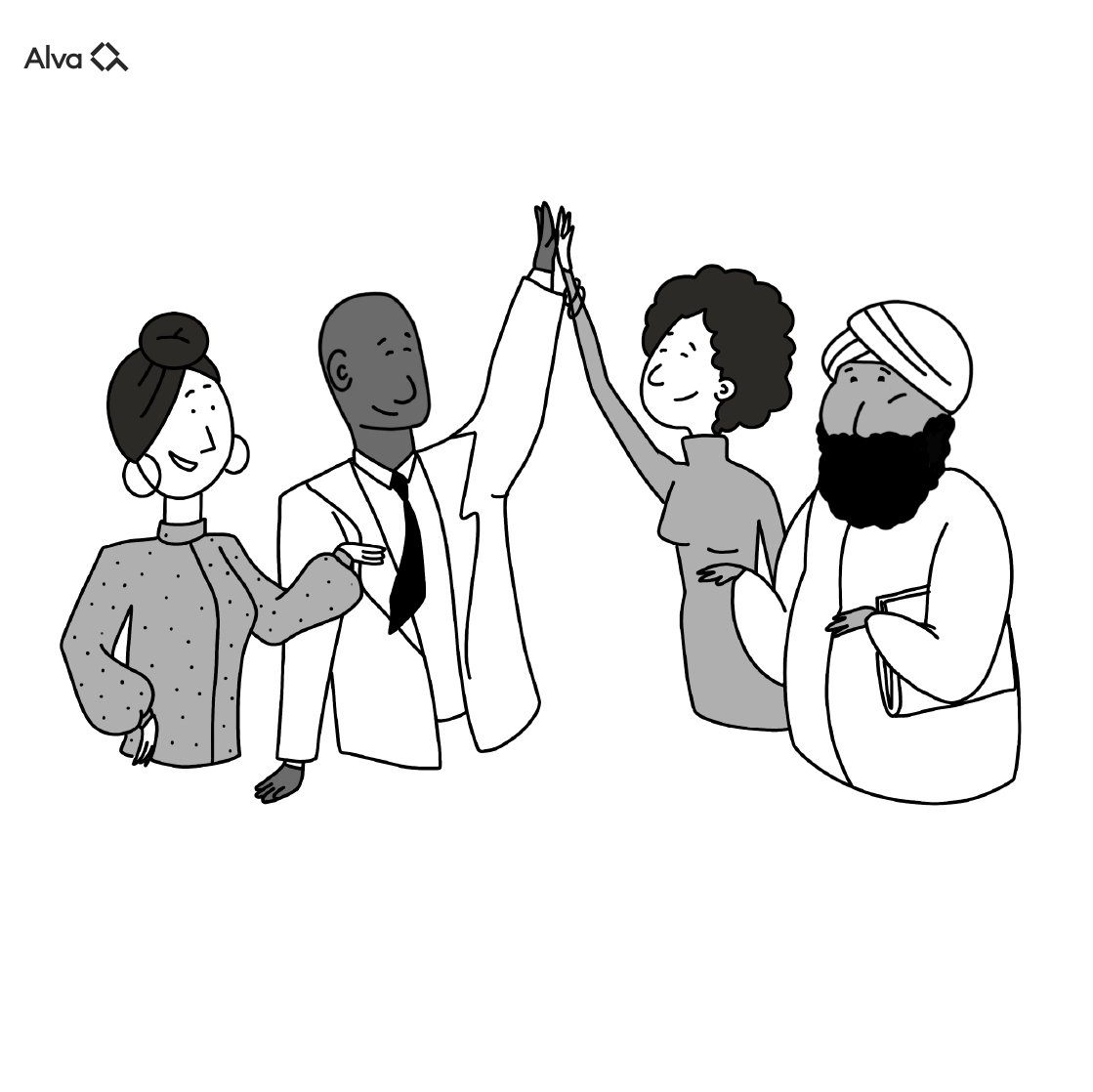What are the stages of psychological safety?
According to Dr. Timothy Clark, author of The 4 Stages of Psychological Safety: Defining the Path to Inclusion and Innovation, employees have to progress through the following four stages before they feel free to make valuable contributions and challenge the status quo:
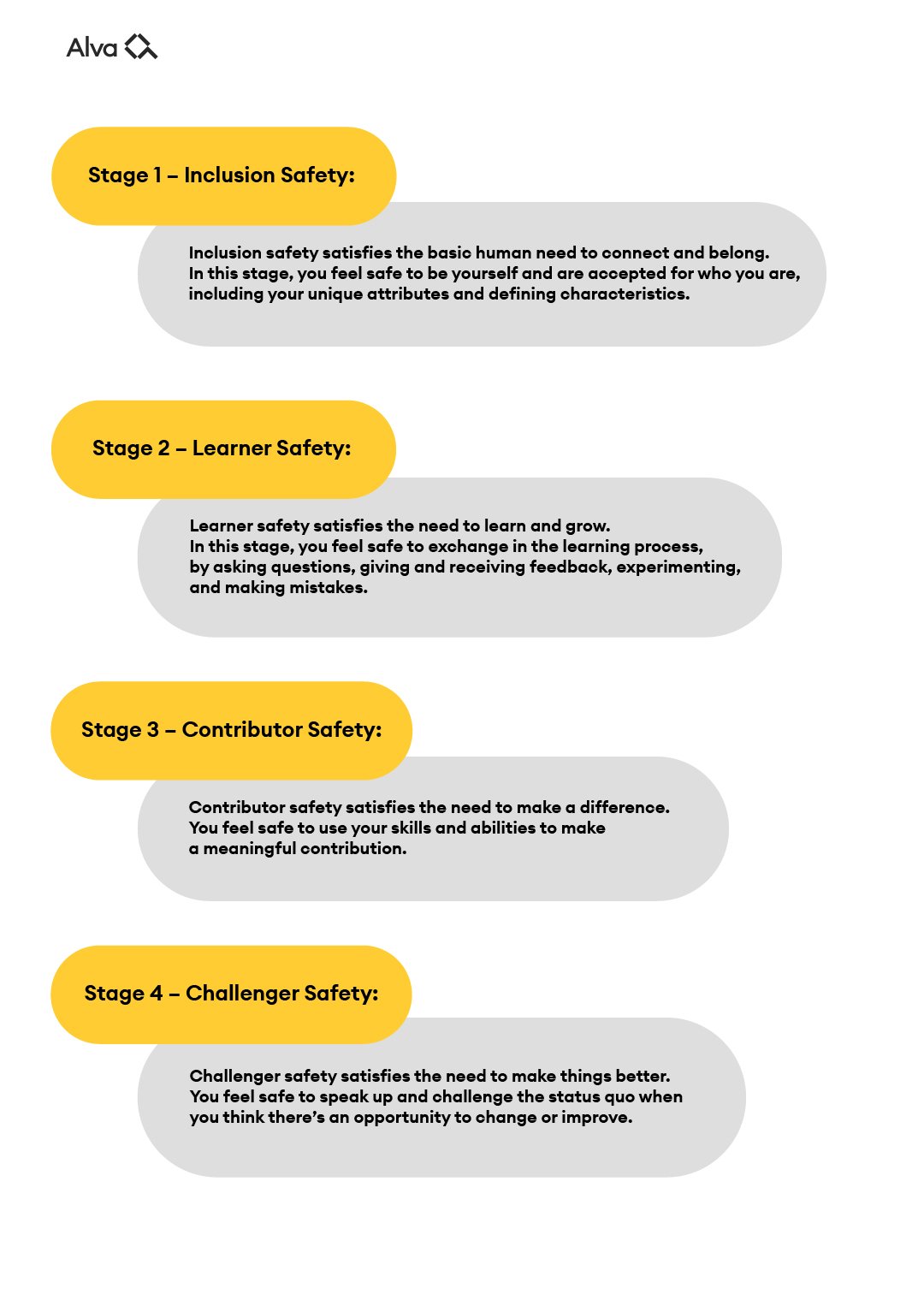
How can we build psychological safety?
To understand how successful companies work towards having more psychological safety, we looked at Google. Julia Rozovsky, People Analytics Manager conducted a massive two-year study at Google, which revealed that the highest-performing teams have one thing in common: psychological safety, the belief that you won’t be punished when you make a mistake.
People are all reluctant to engage in behaviours that could negatively influence how others perceive our competence, awareness, and positivity.
Your brain when it feels safe - and when it doesn’t
Evolutionary adaptations in the brain explain why psychological safety is both fragile and vital to success in uncertain environments. The brain processes a provocation by a boss, coworker, or dismissive subordinate as a life-or-death threat.
When we think about our brains under threat, we need to think about three sections:
1. The “reptilian brain” that controls the basics, which comprises the brain stem that upholds the biological functions in your body, such as breathing and temperature, and the cerebellum that controls balance.
2. The limbic system that to a large extent controls your emotions. The limbic system consists of several different structures, for instance the amygdala. Amygdala performs a central role in emotional responses.
3. The third section is your frontal cortex, where the “higher” functions are controlled, such as reasoning, planning and inhibition.
The amygdala, the almond shaped grey matter that processes emotions, ignites the fight-or-flight response. The “act first, think later” structure shuts down perspective and analytical reasoning in the brain and leading to us feeling handicapped when strategic thinking is needed in today’s workplace.
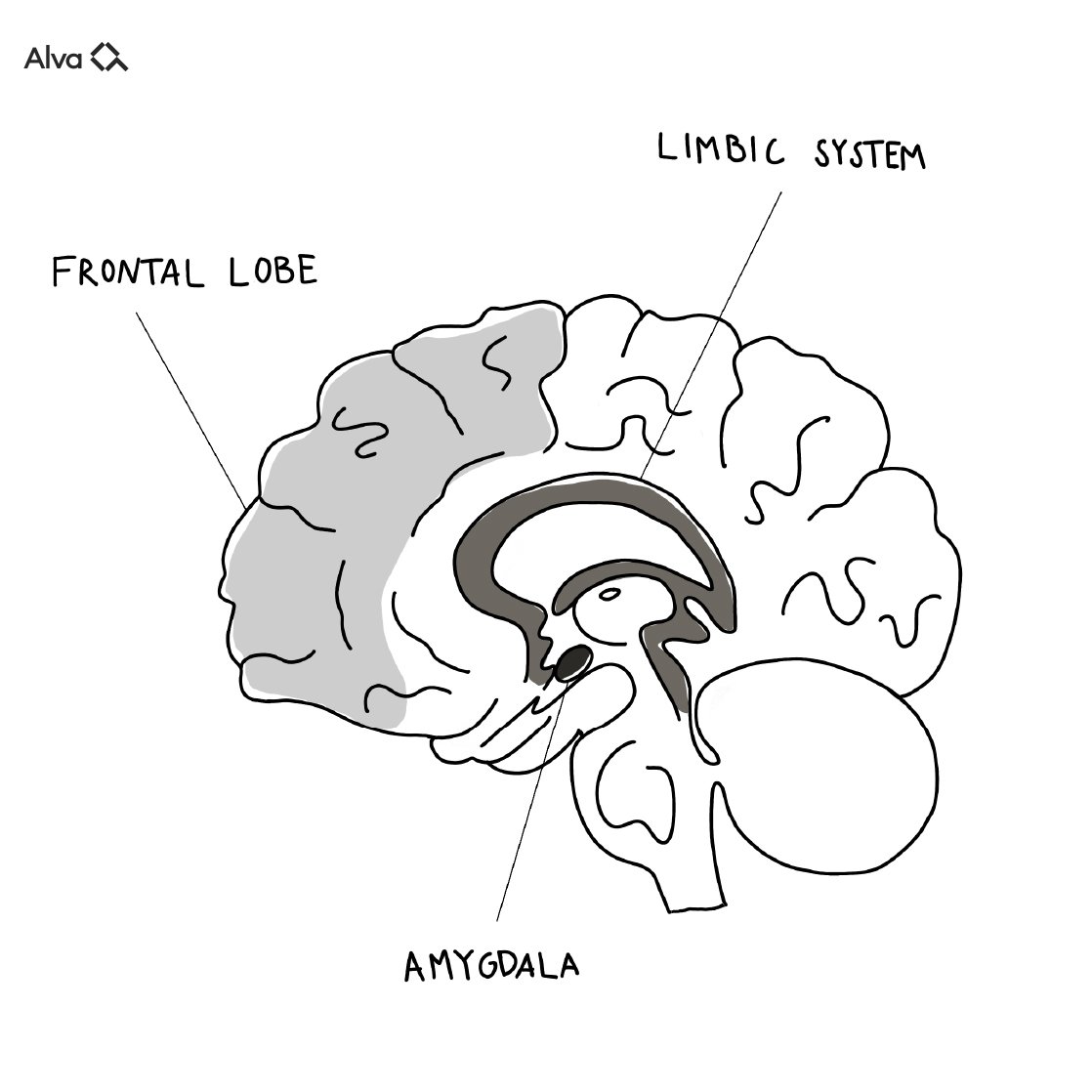
What does anxiety have to do with productivity?
Although this kind of self-protection is a natural strategy in the workplace, it is detrimental to effective teamwork and productivity.
The safer team members feel with one another, the more likely they are to admit mistakes, to partner, and to take on new roles. This also correlates to employee life-cycle: the teams with high psychological safety will stay longer in the company, listen and understand each other's ideas from team members and be up to twice as effective than other teams.
Most companies would like to recreate the same results that Google got but with a pandemic behind us and most of us still working from home and using Zoom or other digital services, how do we create psychological safety in the this digital era
How can we promote psychological safety in the hybrid workplace?
The most exciting companies are actively recruiting remote candidates, having learned that remote work doesn’t mean a drop in team culture. But, as team return to the office yet demand hybrid working, how can we as managers promote the psychological safety that will allow teams to express and explore dynamic and change-making ways of working?
In existing teams leaders must ask direct questions about what’s working and what isn’t, and they must engage in thoughtful discussions on how — in a rapidly evolving context — the vision for what we expect to happen is shifting accordingly.
Zoom chats, when kept to relatively small sizes, can still develop the connective tissue linking actions to a shared vision for the future between leaders and team members.

In these calls, leaders need to listen, but they are also responsible to add positivity into the conversation. It could be as simple as showing genuine excitement over something you’re working on to lift the mood of the team even though its on a digital platform.
Managers also need to listen deeply to the words and tone of voice of their teams: is someone quieter than usual? Using nervous language when usually they are engaging and outgoing?
The manager isn’t responsible for every nuance in a team member’s day; however, a quick 1:1 check in between a manager and team member can reset a relationship, and allow a team member to know that they have been heard, are cared for as a human, and return to delivering their best work - rather than worrying about team dynamics.
Whose responsibility is psychological safety?
When we think about psychological safety, we think about the leaders who bear the responsibility of creating the environments - physical, face to face, and online - that enable us to thrive. Founders and senior leadership are responsible for setting the culture and safety practises but, once set, what’s the best chance of success?
When we’re thinking about what makes a great manager, years of experience aren’t the most important metric for success: what personality traits make someone more likely to be a great hire?
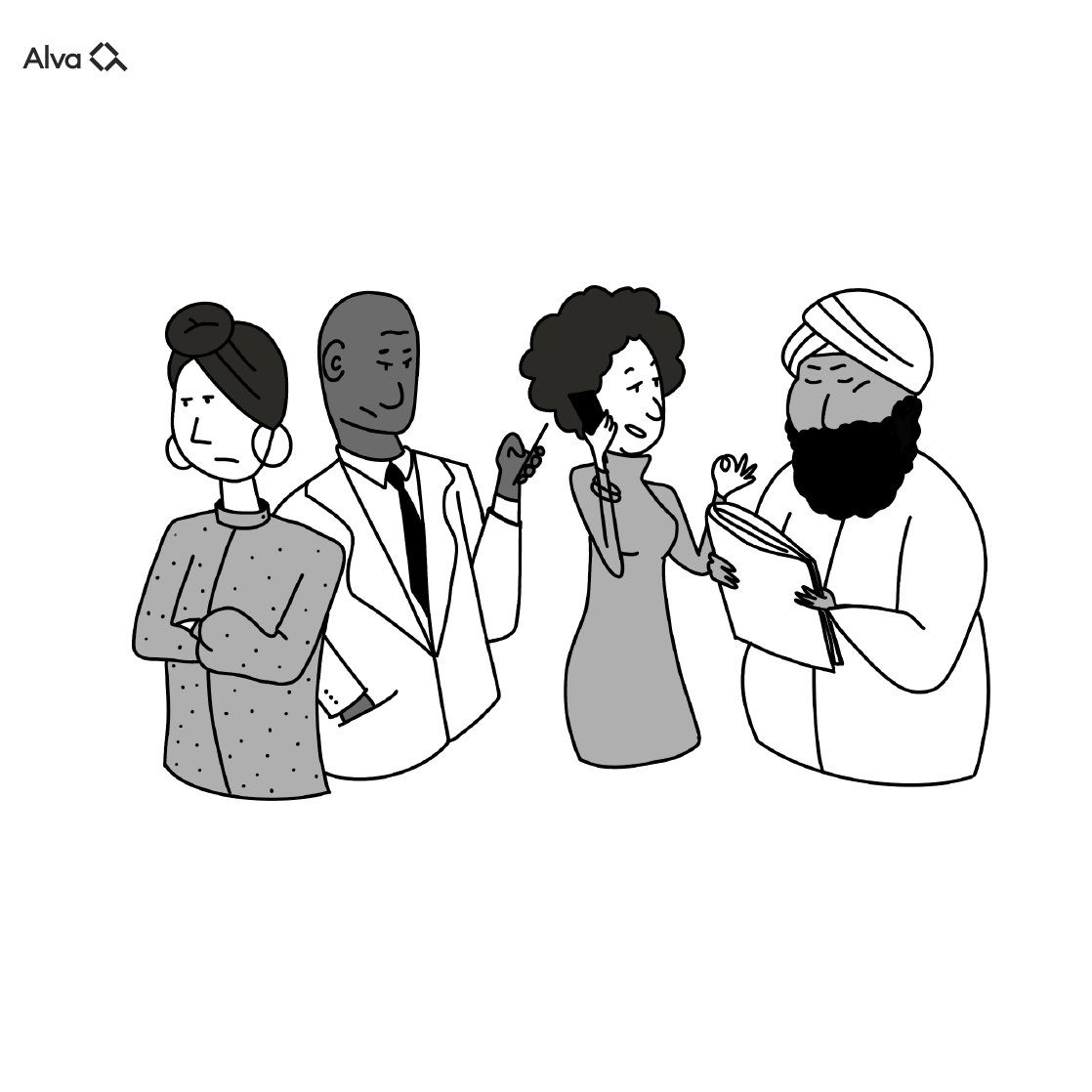
Managers need a moderately high level of General Mental Ability, because they’re required to process a lot of information quickly and efficiently, and know how to apply it.
But, if we’re not focussing on years of experience, then how can we assess who is most likely to be a great manager who can support our psychological safety processes?
What traits make for a great manager?
Whenever we’re thinking about hiring, we take the time to think “why?” - why are we hiring someone? Is it because someone has left? Because we’re expanding?
And what do we need that person to help us with?
When we’re thinking about managers, we’re thinking about someone who can lead others.
The main personality types we look to are predictors from the factors Conscientiousness, Extraversion, and Emotional Stability, as well as logical ability. The other characteristics we look to are:
- a people leader who likes to drive towards ambitious targets and makes others want to follow
- an executive self-starter who takes own initiatives and likes to take the lead
- a highly energetic person who prefers to live and work at a high tempo
- someone who is able to work well under pressure, remains stable and calm in stressful situations, and is able to lead the team through rough times.
When we hire someone who is able to process complex information, who can lead people and genuinely cares both about results and people, we find someone who is predisposed to being a great manager; maybe they have 1 year of experience or 5 - but they are most able to help us nurture the psychological safety that is necessary in today’s competitive and evolving marketplace.
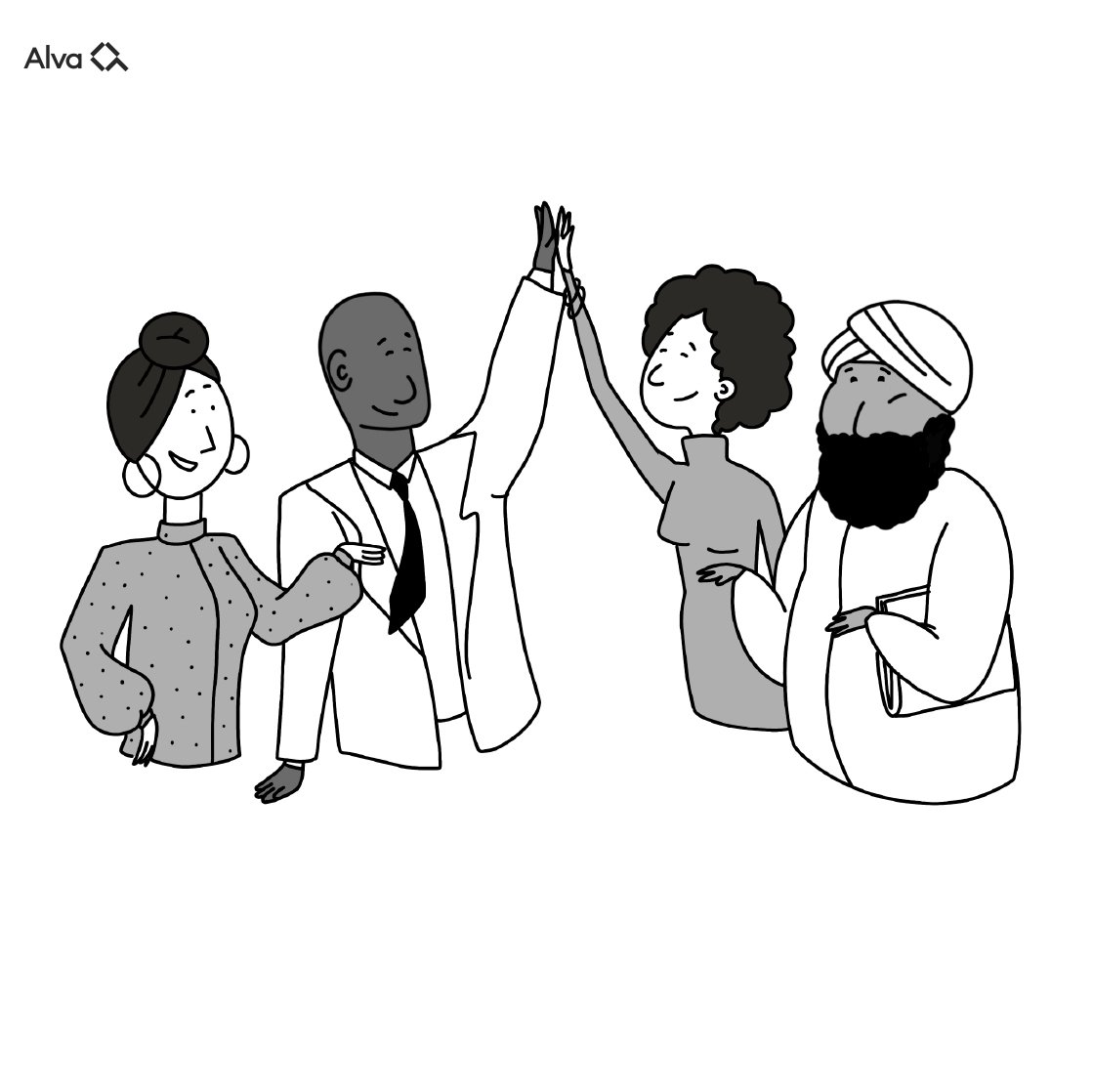
Leaders and psychological safety
Leaders for the teams must first turn inward to understand and integrate their own emotions and fears, and then turn outward to support others in the same team. So how do add this in your team and boost your team too feeling more safe in their environments?
- Start by creating space to attain a keener awareness of what is going on within and around you.
- Be bold in exhibiting vulnerability by lowering your guard and confronting what is unfolding.
- Demonstrate empathy to better tap the emotions that others are feeling.
- Act with compassion to make individuals and groups feel genuinely cared for.
- Hire great people who can lead with and nurture great talent.
